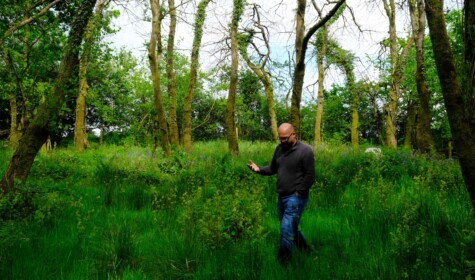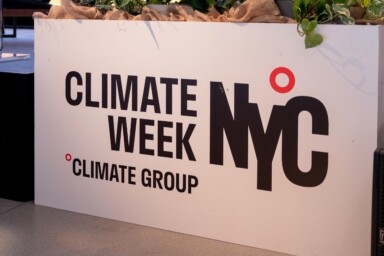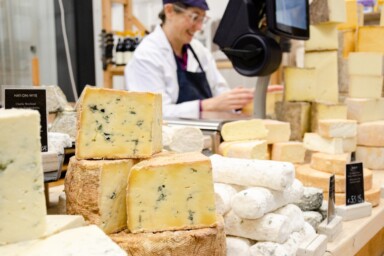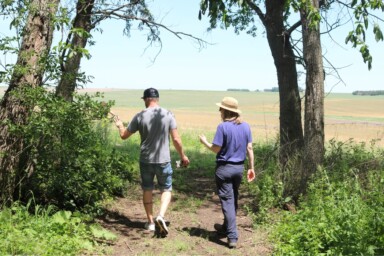How can measuring sustainability help us to understand and value the produce and services that farmers deliver? In this series, we explore the role of metrics in transitioning to a more sustainable food and farming system, and we meet some of the people who are leading the way. Here, Sustainable Food Trust (SFT) Communications Manager, Victoria Halliday, takes a closer look at soil health and goes to meet mutton producer, Matt Chatfield, on his farm in west Devon.
Regenerative, organic, nature-positive – whatever your definition of sustainable farming, they all have their roots in the same thing: healthy soil. Blanketing the Earth in a layer that is about 13 cm to 25 cm deep, soil serves as the dynamic interface between the dead world of geology and the bustling life of the planet’s surface. It provides the means through which the Earth is able to continually regenerate, turning decomposing matter into new life via the action of microorganisms, which, in just three tablespoons of soil, outnumber the world’s human population.
Reflecting on this miraculous process of renewal, American poet, Walt Whitman, expressed awe, bordering on horror, when he wrote:
“What chemistry!
That the winds are really not infectious […]
That when I recline on the grass I do not catch any disease,
Though probably every spear of grass rises out of what was once a catching disease […]
Now I am terrified at the Earth, it is that calm and patient […]
It renews with such unwitting looks its prodigal, annual sumptuous crops,
It gives such divine materials to men, and accepts such leavings from them at last.”
Whitman’s dark, yet strangely reassuring, meditation on the action of soil microbes was penned in 1856, well before the catastrophic events of the 1930s Dust Bowl that saw more than 75% of topsoil lost from areas of the North American and Canadian flatlands. The disaster, which left over 500,000 Americans homeless, intensified the Great Depression and devastated the region’s ecology. It was a direct result of settler farmers’ failure to apply dryland farming methods that would have protected the soil against wind and drought. Instead, deep ploughing to create intensive cropland tore up the native grass cover, leaving soils exposed and friable. The events in the States triggered increased government involvement in land management and soil conservation, with a series of initiatives started in the 1930s that were aimed at reducing soil erosion.
Fast forward to the present day, some 90 years later, and how are our agricultural soils faring? In many areas, particularly in those with a long history of continuous cultivation, the outlook is poor to very poor. Through a combination of factors that include use of synthetic fertilisers and agrichemicals, compaction and removal of organic matter, conventional intensive agriculture is rapidly depleting and degrading topsoil, threatening our capacity to feed ourselves, to control flooding and to lock up carbon in the soil. History offers us countless lessons on the human, ecological and economic suffering that follows poor soil management; it is clear that, after 70-odd years of extractive, chemically dependent farming methods, the warning bells are sounding loud.
The importance of soil management
The FAO estimates that sustainable soil management could enable us to produce up to 58% more food globally. While achieving long-term food security depends as much on reducing waste, enabling food sovereignty and changing diets as it does on increasing yields, the FAO’s findings do highlight how soil health is critical to farmers’ ability to produce enough food. Considering this, farmers need to be equipped with the means to monitor and understand the state of their soils and to be recognised and rewarded for improved soil stewardship. While the Sustainable Farming Incentive offers UK farmers payments for improving soil health, there are calls for more support and incentivisation, particularly in light of the Government’s commitment to ensuring that 40% of agricultural soils are under sustainable management by 2028.
Essential to this is a common language for measuring and valuing soil health. This is something that the SFT is working on through the Global Farm Metric (GFM). Created in collaboration with farmers and other stakeholders, the GFM is a framework to understand, measure and monitor the state of farming systems. It comprises 12 interrelated categories that, when taken together, give a holistic view of farm sustainability. As you might expect, one of the GFM’s 12 categories is ‘soil and water’, reflecting the crucial role of healthy soil within a sustainable farming system.
But how can frameworks like the GFM help us to tackle soil degradation and support farmers to continue delivering the ‘annual sumptuous crops’ described in Whitman’s poem? And who are the farmers that are already leading the way when it comes to a soil-first approach to sustainable production? With these questions in mind, we visited Matt Chatfield on his farm near the Cornwall-Devon border in the UK, where he is harnessing the power of healthy soils to produce world-class mutton and restore wildlife habitats. Matt’s family have farmed in the area for generations, recently struggling in the face of the dwindling productivity and profitability of their land, which Matt is now regenerating through careful soil management.
Matt Chatfield: four questions on soil health
Matt, can you tell us a bit about what you’re doing on your farm to measure and improve the health of the soil and why that’s important?
The number one thing that I’m doing is adding organic matter. My farm had been stripped of organic matter for 40 or 50 years, not due to the fault of any one person, but because of the way that farming has gone. So, I consider my job as being to feed worms – they’re the architects of the soil and they need organic matter to do their job.










